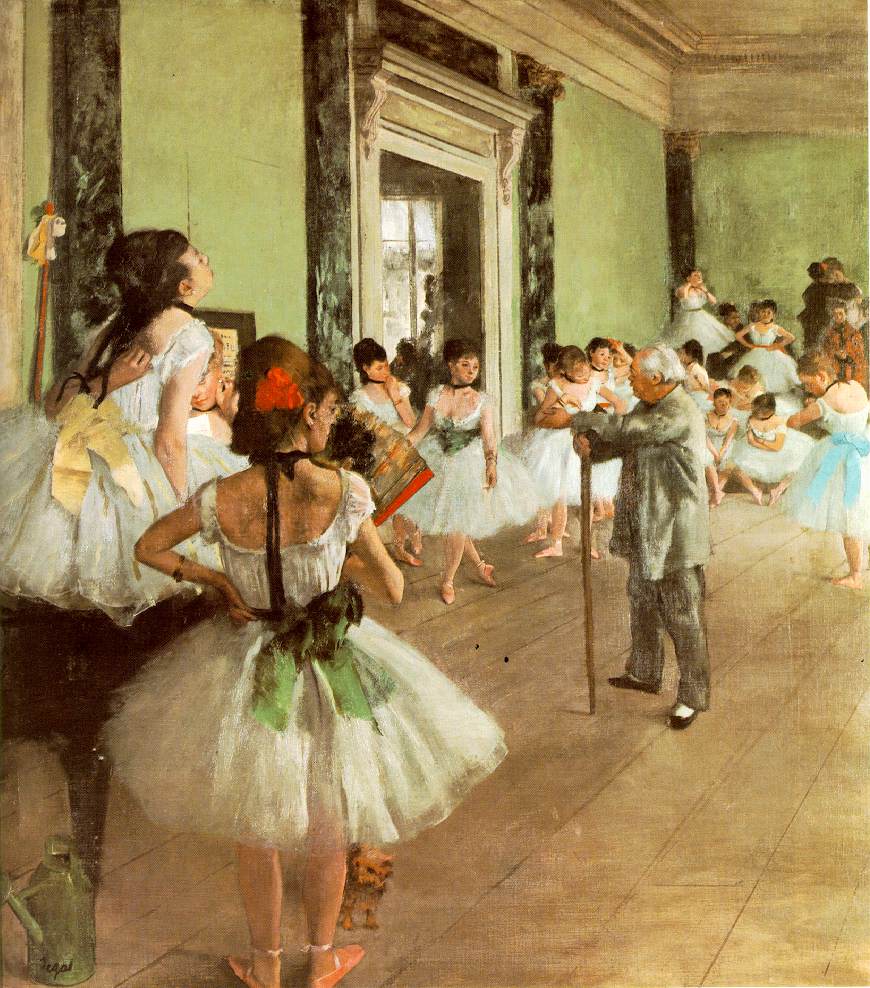Dance Attire
4 to 7
Hair pulled back in a bun or pony tail
Pink leotard and pink tights
Pink ballet shoes
Black tap shoes
7 to 11
Hair pulled back in a bun or pony tail
Black leotard and black tights or dance pants
Pink ballet shoes
 |
| Edgar Degas, The Dance Class (La classe de danse)c.1873-1876 |
In the late 1800s most ballerinas started their training before the age of six. Known as the "rats" of the Opera, they came to the Opera House early every morning, practicing all day under the strict tutelage of the dance master. They had no time for school.
When the dancers matured and perfected their movements, they joined the corps de ballet, dancing in the evening ballet sequences that were part of every opera.
Dance can be a life long pursuit that stimulates us intellectually, emotionally and creatively. I am looking forward to the journey ahead with my new students!













